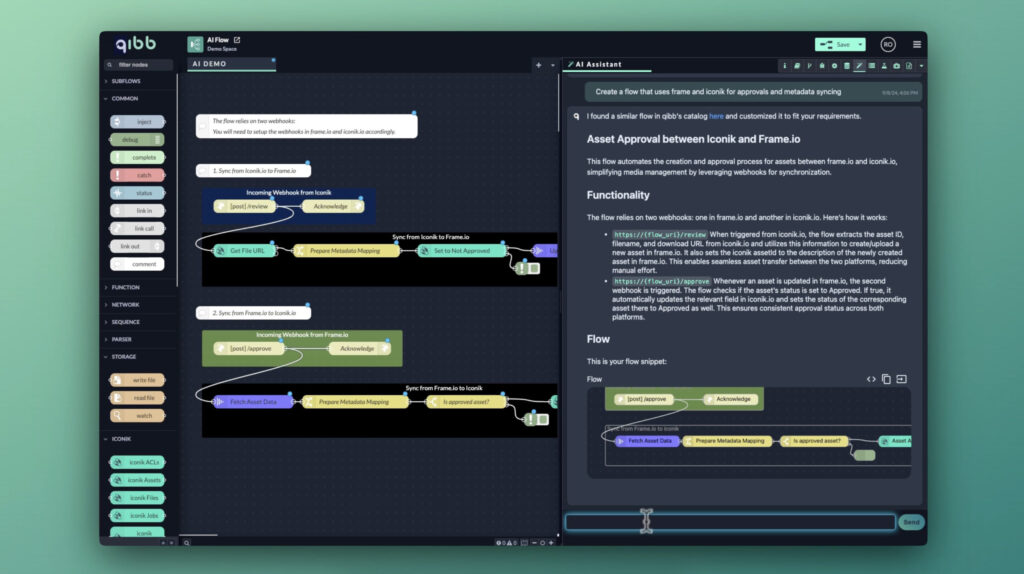In the rapidly evolving landscape of media workflows, the advent of artificial intelligence is marking a transformative shift in how tasks are executed efficiently and reliably. The introduction of AI Copilot by qibb represents a significant development, offering end-to-end support for media professionals through an AI-driven conversational assistant. This tool empowers users to articulate their needs in natural language, significantly streamlining workflow creation and optimization processes.
However, as organizations increasingly adopt automation to enhance productivity, common challenges persist. Issues such as errors in automation logic, API rate limits, and integration problems remain prevalent. Addressing these obstacles effectively is crucial for maintaining workflow integrity and maximizing return on investment.
One of the most frequent errors encountered in automation is the occurrence of make errors—these can stem from incorrect configurations or assumptions about the data flow. To tackle these issues, users should first conduct a thorough analysis of the configuration settings. This includes checking the data input specifications, validating endpoint permissions, and confirming that all expected inputs are being accurately recorded. Once discrepancies are identified, users can adjust the parameters and re-test the automation to ensure the process works as intended. Leveraging AI tools such as AI Copilot can facilitate this analysis by providing insights and recommendations based on historical performance.
Additionally, API rate limits pose significant constraints. When an application exceeds defined thresholds for the number of API calls in a given timeframe, it can lead to system slowdowns or service interruptions. To circumvent this problem, implementing back-off strategies is advisable. These strategies involve setting up retry mechanisms that anticipate potential rate-limit triggers. It is also beneficial to monitor API usage metrics actively, allowing teams to adjust their request frequency dynamically based on current performance trends. AI Copilot can assist in monitoring these metrics and provide alerts when usage nears the limit, allowing proactive adjustments to be made.
Integration issues represent another substantial barrier to effective media workflows. When multiple systems fail to communicate efficiently, data can become siloed, limiting overall operational visibility. To rectify integration issues, users should start by mapping out the existing workflow processes. This step includes identifying the integration points between various systems and ensuring that compatibility is maintained across platforms. Utilizing AI-driven tools can enhance this step by automating the identification of integration points and generating function code where needed. AI Copilot, for example, can simplify the integration process by proposing optimal connection strategies and suggesting code adjustments tailored to the specific requirements of the workflow.
It is also vital to address error handling within automated workflows. A common pitfall is the lack of robust error detection and handling mechanisms. Ensuring clear visibility into the errors, along with user-friendly documentation of potential issues, can mitigate damage when problems arise. By utilizing AI capabilities like the automatic generation of architecture diagrams and process visualizations, teams can enhance their understanding of workflow dependencies and connections. This clarity aids in troubleshooting efforts, allowing teams to quickly pinpoint failures and implement corrective measures.
Moreover, collaboration plays a crucial role in troubleshooting automation errors. Providing clear and plain-language explanations of workflows can facilitate better communication among team members. This allows for more efficient identification of issues and promotes a culture of shared responsibility. Teams can foster an environment where insights are shared and recommendations for continuous improvement are encouraged, ultimately driving efficiency across the organization.
The risks associated with uncorrected errors in automation processes are significant and can disrupt not only internal operations but also customer satisfaction. Delays, miscommunication, and workflow inefficiencies can lead to cost overruns, loss of potential revenue, and diminished trust from clients. By prioritizing quick resolutions through effective troubleshooting, organizations can minimize these risks and position themselves for sustained growth.
In conclusion, the transformative potential of AI tools like AI Copilot goes beyond simply streamlining workflows; they also enhance the robustness and reliability of automation processes. For SMB leaders and technical specialists, focusing on resolving common issues such as make errors, API rate limits, and integration challenges is critical. By systematically addressing these problems, organizations can maximize their operational efficiency and ensure a high return on investment.
FlowMind AI Insight: Embracing AI-driven solutions for workflow automation not only alleviates common challenges but also empowers teams with the insights needed for proactive decision-making. This holistic approach fosters resilience and adaptability in an ever-evolving digital landscape, setting the stage for sustained operational excellence.
Original article: Read here
2025-03-18 07:00:00

